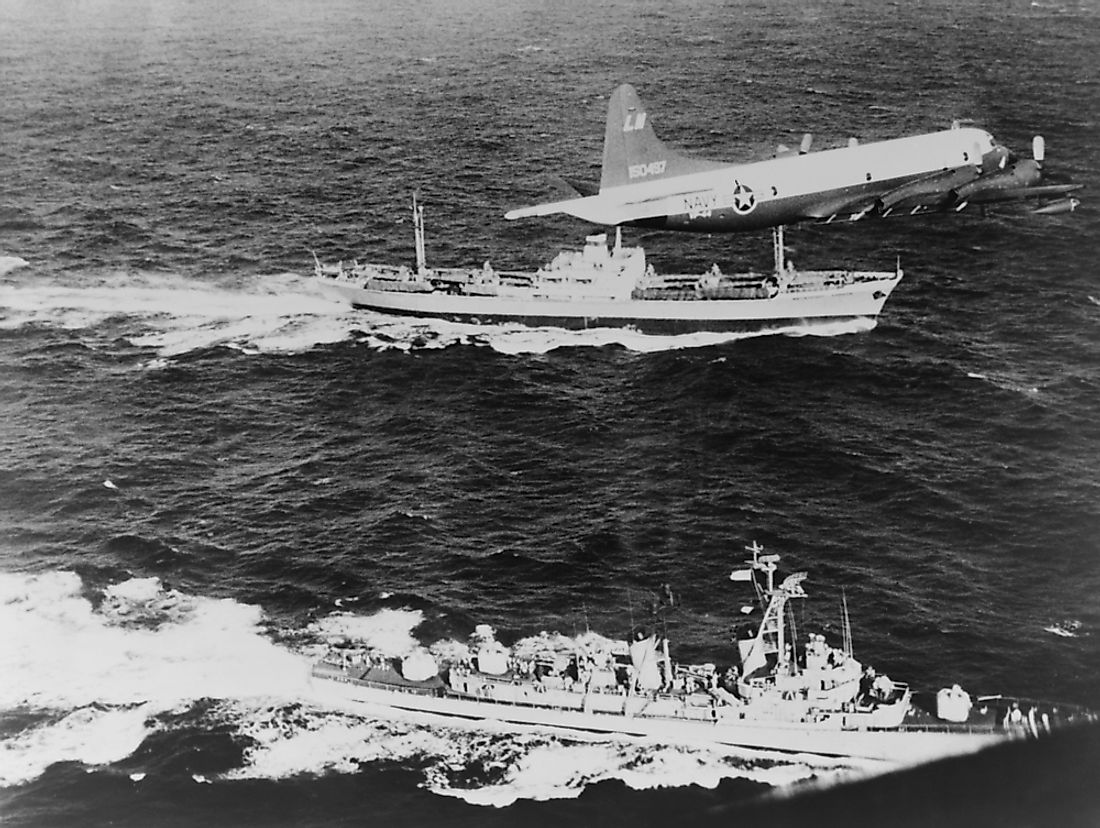What Was the Cuban Missile Crisis?

The Cuban Missile Crisis was a confrontation between the US and USSR concerning the latter’s deployment of ballistic missiles in Cuba and the former’s deployment of ballistic missiles in Turkey and Italy. The crisis, also called the October Crisis of 1962 or the Caribbean Crisis, was one of the closest moments during the Cold War when the two powers almost engaged in a full-scale nuclear war. As both sides prepared their citizens for doomsday, secret miscommunications escalated the conflict but at the end, successful diplomatic agreements ended the crisis. The events took place from October 16 to October 28, 1962.
Causes of the Crisis
In 1961, President Kennedy’s administration undertook the Bay of Pigs Invasion in Cuba that involved several CIA-sponsored US military personnel and counter-revolutionary forces mainly made up of Cuban exiles in the US. Fidel Castro defeated them within three days and in order to feel safe from possible future invasions, he solicited the help of the USSR. Soviet leader Nikita Khrushchev agreed to Castro’s request and construction of missile launch facilities began in Cuba. Prior to these events, USSR had promised not to arm Cuba with any missiles. According to the USSR, they agreed to Cuba’s request because of the presence of US missiles in Turkey and Italy, a position which the country believed made it vulnerable to a surprise US attack. There were initial warning signs that USSR was sending missiles to Cuba but President Kennedy ignored them until when a US spy plane took photographs of missiles and missile facilities in Cuba.
Crisis Acceleration
On October 16, 1962, US military chiefs advised President Kennedy to launch an airstrike on missile sites and invade Cuba. Kennedy refused to implement this advice but instead announced that the US Navy would intercept USSR ships supplying Cuba with the weapons on international waters. This plan too was risky because USSR would consider such a blockade as a provocation for war. The US thereafter called the blockade a “Quarantine” that would not affect transportation of basic needs. USSR responded angrily through a letter warning the US not to violate its freedom to international waters and air because such a violation would be an aggression which would push the country to pursue nuclear missile war. What followed was another intense six days of Cuba and USSR insisting that the weapons were for self-defense. On October 27, USSR shot down a US spy plane and on the same day, US dropped a small depth charge at a USSR nuclear submarine. The charge was meant to signal the submarine to come up but instead hit the vessel. The USSR commanders of the vessel tried to seek clarification but they were too deep under to communicate effectively with surface generals. They thought that war had begun and they prepared to launch a nuclear weapon. For such a launch to happen, all the three commanders had to make a unanimous decision, however, one decline to sign off the launch. By this time, the US military was of DEFCON 2 which is just a step away from a full-blown nuclear war, additionally, they set the metaphorical doomsday clock to one minute to midnight.
Secret Diplomacy
As the supremacy battles continued, there was also diplomatic negotiations taking place. US Attorney General Robert Kennedy met Soviet ambassador Anatoly Dobrynin and they agreed that the US would remove their missiles from Italy and Turkey and would also never invade Cuba. In return, the USSR agreed to invite the UN to inspect their withdrawal of weapons from Cuba. On October 28, USSR announced their intentions to remove missiles from Cuba putting to an end to the 13-day crisis. Initially, the US and USSR respectively criticized Robert Kennedy and Dobrynin for negotiating with the enemy but historians continue to praise their involvement that averted a nuclear war.







